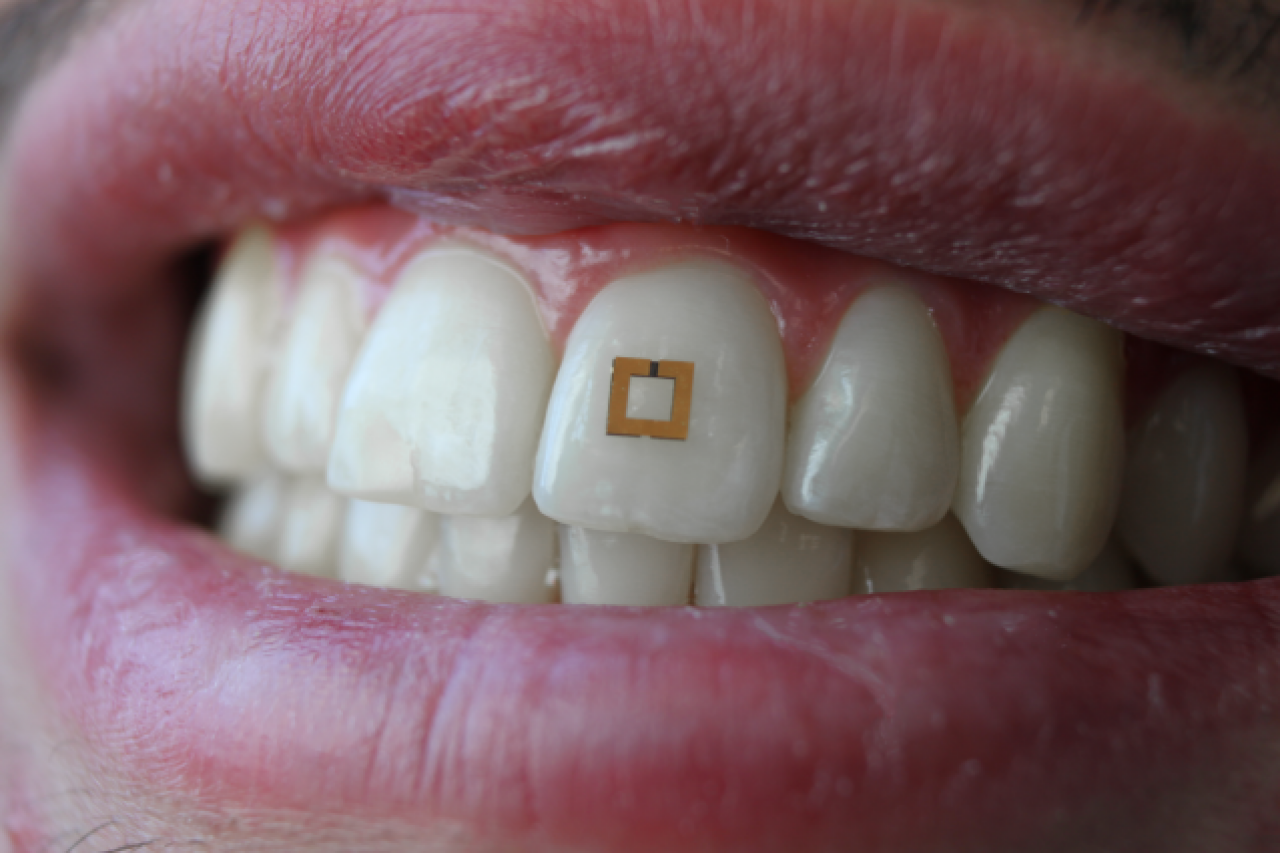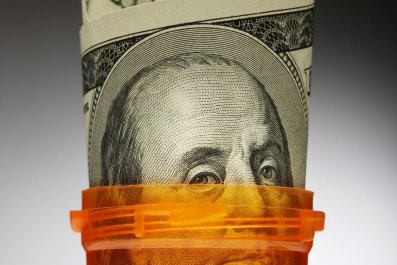It's not easy to remember what you ate a week ago or even the day of, but a new tiny sensor could help doctors keep track of patients' diets.
The sensor, which is designed to be mounted on a tooth, measures 2mm x 2mm, according to a statement from Tufts University. It's able to communicate wirelessly through devices, such as smartphone, and can provide information regarding glucose, salt and alcohol intake.
Related: Ancient Bond Between Human and Animals Revealed in 14,000-Year-Old Diseased Dog Teeth
Although it's miniature, it's sure to be noticed considering it's not white, but rather gold in color. In a photo published by Tufts, the sensor is seen placed on the center surface of a front tooth. It's unclear whether it's able to mount to the back of a tooth or a tooth not visible when you smile.
When the user eats certain foods, it's able to change "color" to allow those monitoring the data to detect what was ate. For example, if salt or alcohol is consumed, a layer of the sensor will turn a different hue of radiofrequency waves.
"In theory we can modify the bioresponsive layer in these sensors to target other chemicals – we are really limited only by our creativity," Fiorenzo Omenetto, study author and engineering professor at Tufts, said in a statement. "We have extended common [radiofrequency ID] technology to a sensor package that can dynamically read and transmit information on its environment, whether it is affixed to a tooth, to skin, or any other surface."
Related: Drinking Wine Could Keep Your Teeth Healthy and Prevent Gum Disease
Omenetto and his colleagues research, which is scheduled to be published in the journal Advanced Materials, outlines how the sensor functions. It's composed of three thin layers: a middle one which absorbs and tracks data and two surrounding gold layers. They all work together like a "tiny antenna," according to the statement.
The researchers tried out their invention on participants who drank alcohol, gargled mouthwash, and ate soup, and it was successfully able to recognize what the person had, Science Magazine reports. The hope is that the device will be able to help doctors and researchers alike to make connections between dietary intake and overall health.



















